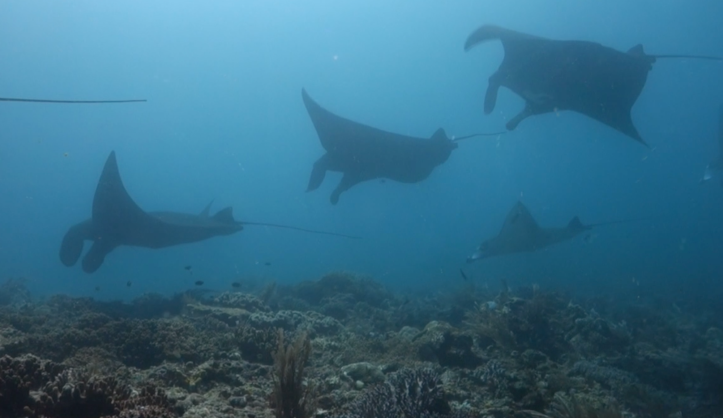A little while back I hung out with the lovely, sunshiny Steph Venables – a PhD student investigating manta ray populations in Mozambique and Raja Ampat, Indonesia. Her research is set to provide essential information to help manage and protect mantas, a species currently listed as vulnerable on the IUCN red list.
Obvs mantas are too wonderfully odd to be lost from our oceans, so together we made a video to help her crowd fund her research. Also, for proof of point, I’m listing here some of the odder manta facts to help you realise just how incredible (and incredibly important) these floppy finned fish are.
So read on, check out the video and if you love mantas please consider donating to this worthy project! Any money you can muster can make a difference to the conservation of these gentle giants.
Read more on Steph’s project and support her campaign here.
Music by my mates Death by Denim – check them out here.
![]() 1. You can collect their DNA with a toothbrush
1. You can collect their DNA with a toothbrush
Mantas are covered in a body mucus which can be scrubbed off by SCUBA divers with a toothbrush. When scrubbing, the mucus mixes with the black pigment on the manta and turns the toothbrush bristles black. As this mucus contains skin cells, the toothbrush technique provides an easy and non-invasive way to collect the animal’s DNA.

2. Males go left during sex
Mantas have small teeth on their lower jaws and males will grind these against females while mating to improve their grip. These ‘love bites’ can leave scars on the female’s fins and oddly enough, a study found these scars occurred overwhelmingly (seriously, like 99% of the time) on the female’s left pectoral fin. It seems males almost always go left during sex and this biting behaviour may be the sole reason mantas still have teeth.
This behaviour is especially odd considering no other shark or ray species has been found to favour one side like manta males do.
3. Soaring & somersaulting
Yes there’s some biting involved in the actual copulation (see above), but manta rays perform some bizarre behaviours beforehand too. Males may breach, impressively throwing the entire length of their sometimes six-plus metre bodies out of the water.
Males will line up behind females too, performing a wide range of movements one after the other in a cannon-like sequence. These movements can include veering, swooping, looping and even somersaulting!

4. Most importantly, mantas are money-makers
One 2013 study estimated that between 23 countries, manta ray tourism could make over US$73 million in revenue annually to dive operators and up to US$140 million in related manta ray tourism.
They found that swimming with manta rays was more sought after than swimming with whale sharks and that people were willing to pay more for a manta encounter than for an encounter with either turtles or sharks. The trade of killing mantas for their gill rakers to use in bogus medicine earns only an estimated US$5 million, so economically speaking mantas are worth much more alive.


Psst.. don’t forget to check out, or donate on, Steph’s crowdfunding page here.
References
Marshall, A. D., & Bennett, M. B. (2010). Reproductive ecology of the reef manta ray Manta alfredi in southern Mozambique. Journal of Fish biology, 77(1), 169-190.
Kashiwagi, T., Maxwell, E. A., Marshall, A. D., & Christensen, A. B. (2015). Evaluating manta ray mucus as an alternative DNA source for population genetics study: underwater-sampling, dry-storage and PCR success. PeerJ, 3, e1188.
O’Malley, M.,P., Lee-Brooks, K., & Medd, H. B. (2013). The global economic impact of manta ray watching tourism. PLoS One, 8(5) doi:http://dx.doi.org/10.1371/journal.pone.0065051